Check out our range of stock.
Didn't find what you like?
Send us a message
Found something out of stock?
Send us a message
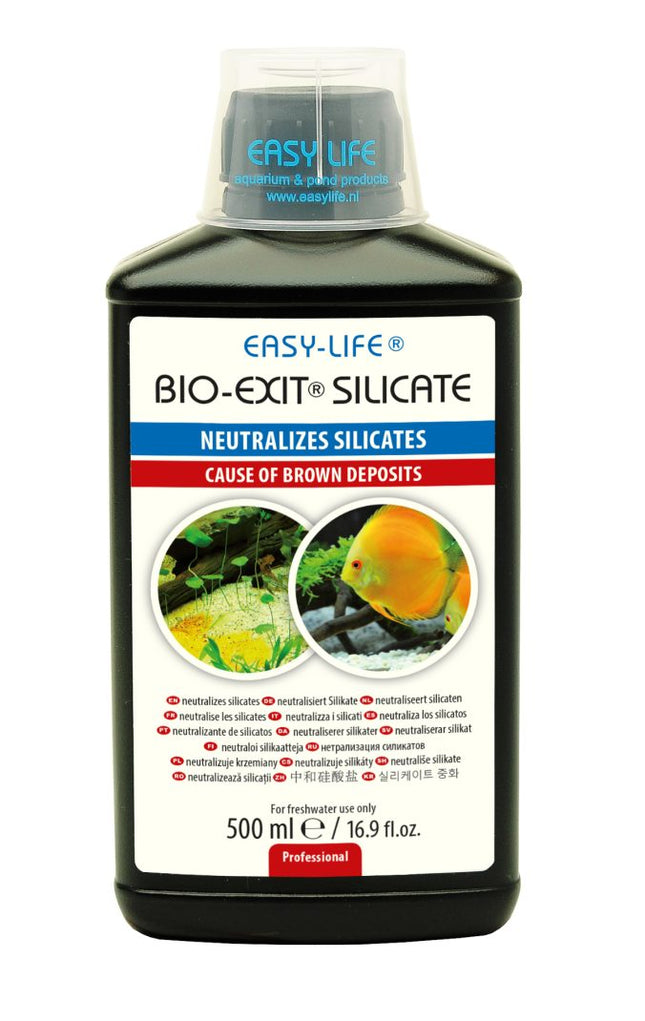
\nBio-Exit Silicate effectively eliminates silicates, a common source of unsightly brown diatom deposits in aquariums. By neutralizing silicates from tap water and substrate, it prevents the growth of these diatoms. Available in various sizes, Bio-Exit Silicate offers a practical solution to maintain a clean and aesthetically pleasing aquarium.\n\n
$44.00
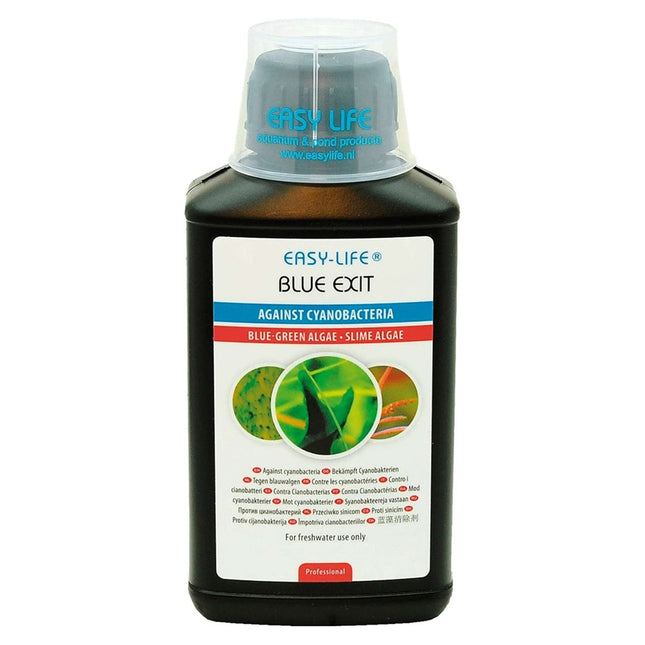
Easy-Life Blue Exit Against Cyanobacteria is a powerful, safe, and easy to use liquid solution that eliminates cyanobacteria (blue-green algae) in aquariums and ponds. It contains an active ingredient that quickly eliminates cyanobacteria colonies and helps to prevent their growth. The 250ml bottle of Blue Exit is enough to treat up to 2500 liters of water and can be safely used on both freshwater and saltwater aquariums. It works quickly, but also has a long-term effect by preventing the growth of new colonies of cyanobacteria. This product is easy to use and does not require any special knowledge or equipment. It is safe for use around all aquatic plants and animals, and can be used on both new and established aquariums.
$49.00 - $100.00
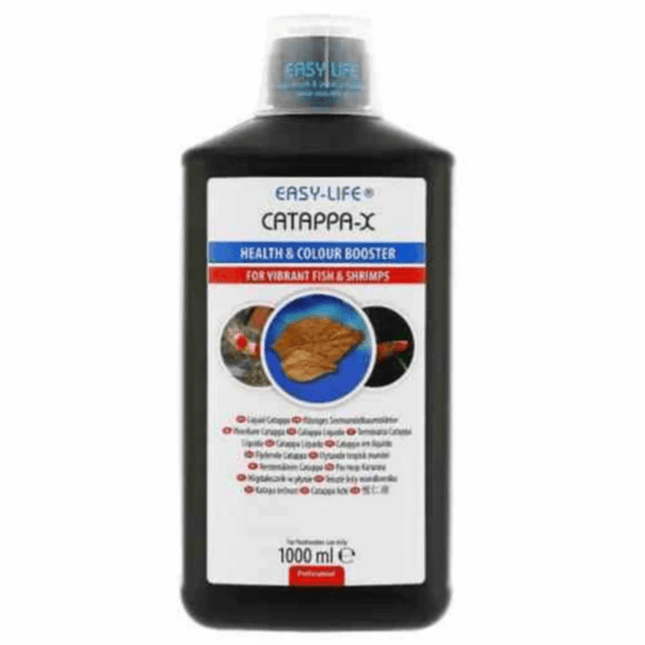
Catappa leaves are added to aquarium water because of the healing effect they have on fish and shrimps. Catappa-X is the effective, fluid variant of the leaves for aquariums. The leaves of the Catappa tree release healing substances when they are immersed in water. The disadvantage of doing so is that, in time, they decompose, which results in the release of organic compounds. This has a number of unpleasant side effects: it turns the water brown and the released organic compounds contaminate the water. Catappa-X is the answer to these problems. It does not discolour nor contaminate the water and it lowers the bacterial count, which greatly reduces the chance of disease. Catappa-X allows fish and shrimps to flourish and have more vibrant colours. Product benefits of fluid Catappa-X Fish and shrimps with more vibrant colours Improves the general health of the living creatures Prevents diseases Does not turn the water brown No extra organic contamination
$110.00
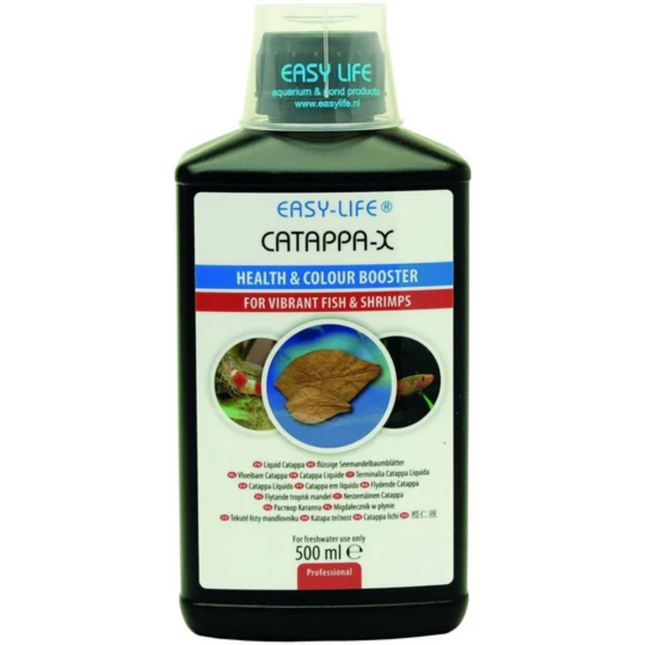
Catappa leaves are added to aquarium water because of the healing effect they have on fish and shrimps. Catappa-X is the effective, fluid variant of the leaves for aquariums. The leaves of the Catappa tree release healing substances when they are immersed in water. The disadvantage of doing so is that, in time, they decompose, which results in the release of organic compounds. This has a number of unpleasant side effects: it turns the water brown and the released organic compounds contaminate the water. Catappa-X is the answer to these problems. It does not discolour nor contaminate the water and it lowers the bacterial count, which greatly reduces the chance of disease. Catappa-X allows fish and shrimps to flourish and have more vibrant colours. Product benefits of fluid Catappa-X Fish and shrimps with more vibrant colours Improves the general health of the living creatures Prevents diseases Does not turn the water brown No extra organic contamination
$40.00
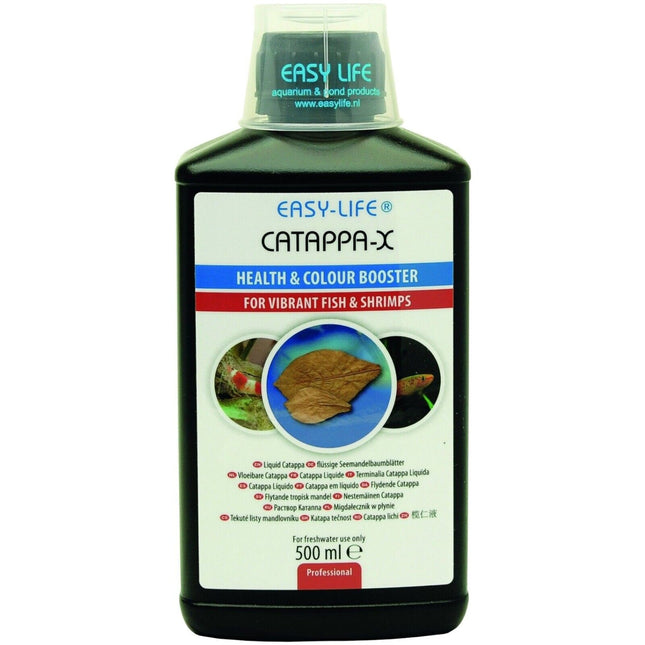
Catappa leaves are added to aquarium water because of the healing effect they have on fish and shrimps. Catappa-X is the effective, fluid variant of the leaves for aquariums. The leaves of the Catappa tree release healing substances when they are immersed in water. The disadvantage of doing so is that, in time, they decompose, which results in the release of organic compounds. This has a number of unpleasant side effects: it turns the water brown and the released organic compounds contaminate the water. Catappa-X is the answer to these problems. It does not discolour nor contaminate the water and it lowers the bacterial count, which greatly reduces the chance of disease. Catappa-X allows fish and shrimps to flourish and have more vibrant colours. Product benefits of fluid Catappa-X Fish and shrimps with more vibrant colours Improves the general health of the living creatures Prevents diseases Does not turn the water brown No extra organic contamination
$50.00

Easy-Life EasyCarbo Planted Aquarium Conditioner is an all-in-one solution for aquarium hobbyists who want to ensure their aquarium is healthy and thriving. This conditioner is made from natural ingredients and contains carbon and other important nutrients to keep your aquarium plants healthy. It helps promote healthy growth and prevents algae from developing in your tank. This product is easy to use and is safe for both freshwater and saltwater aquariums. The 1L size makes it perfect for larger aquariums and it can be used with other Easy-Life products for even better results.
$60.00

Easy-Life EasyCarbo Planted Aquarium Conditioner is a liquid carbon supplement for planted aquariums. This product helps to promote healthy, vibrant aquarium plants by providing them with the carbon dioxide they need for photosynthesis. The special blend of carbon and trace elements helps to increase growth and reduce algae growth. This product is easy to use and can be added directly to the aquarium water. It is suitable for all types of planted aquariums and comes in a convenient 250ml bottle.
$24.95
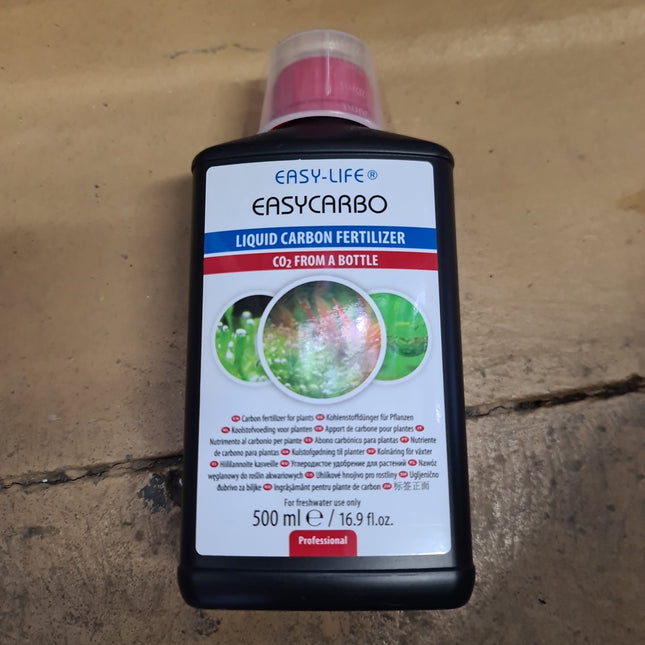
Easy Life EasyCarbo Planted Aquarium Conditioner 500ml is a liquid aquarium conditioner specially formulated for planted aquariums that provides essential carbon for plants to grow. This conditioner contains both carbon and nitrogen, which are essential nutrients for aquatic plants. It helps to promote healthy, lush plant growth and enhances the color of aquarium plants. Easy Life EasyCarbo Planted Aquarium Conditioner 500ml is easy to use, simply add three drops per 10 gallons of aquarium water once a week. This conditioner is suitable for both fresh and saltwater aquariums.
$35.00

\nEasyCarbo Bio is a natural liquid carbon source that provides essential carbon for aquarium plant growth, helping them effectively compete with algae. Carbon deficiency hinders plant growth, leading to nutrient leakage and algae proliferation. For optimal plant health, EasyCarbo Bio should be used in conjunction with ProFito, which provides essential trace elements.\n\n
$26.00
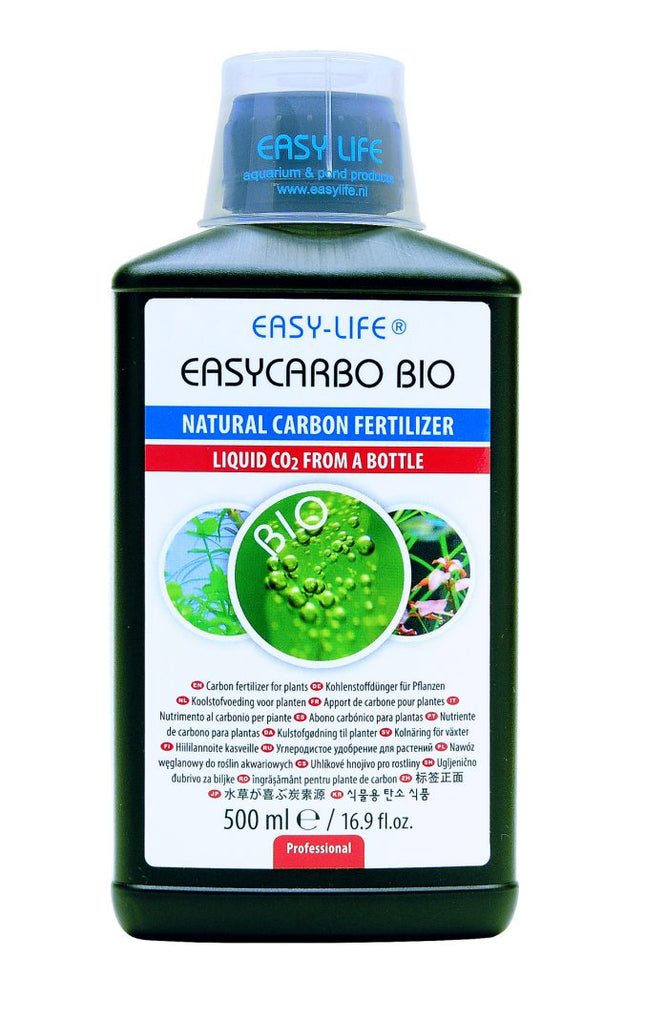
\nEasyCarbo Bio is a natural liquid carbon source that provides essential carbon for aquarium plant growth, helping them effectively compete with algae. Carbon deficiency hinders plant growth, leading to nutrient leakage and algae proliferation. For optimal plant health, EasyCarbo Bio should be used in conjunction with ProFito, which provides essential trace elements.\n\n
$26.00
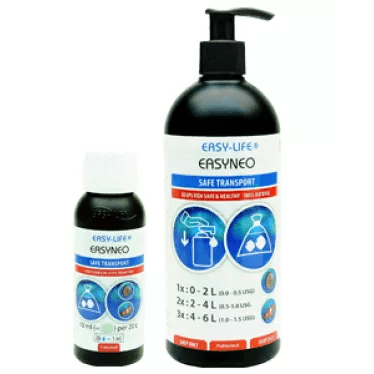
\nCatching and transporting fish weakens their protective mucous membrane, making them susceptible to various diseases. EASYNEO® naturally strengthens the fish’s immune system, preventing stress-induced illnesses and mortality during transport. Post-transport, using EASYNEO® aids in a smooth acclimation, minimizing disease risks.\n\n
$52.00
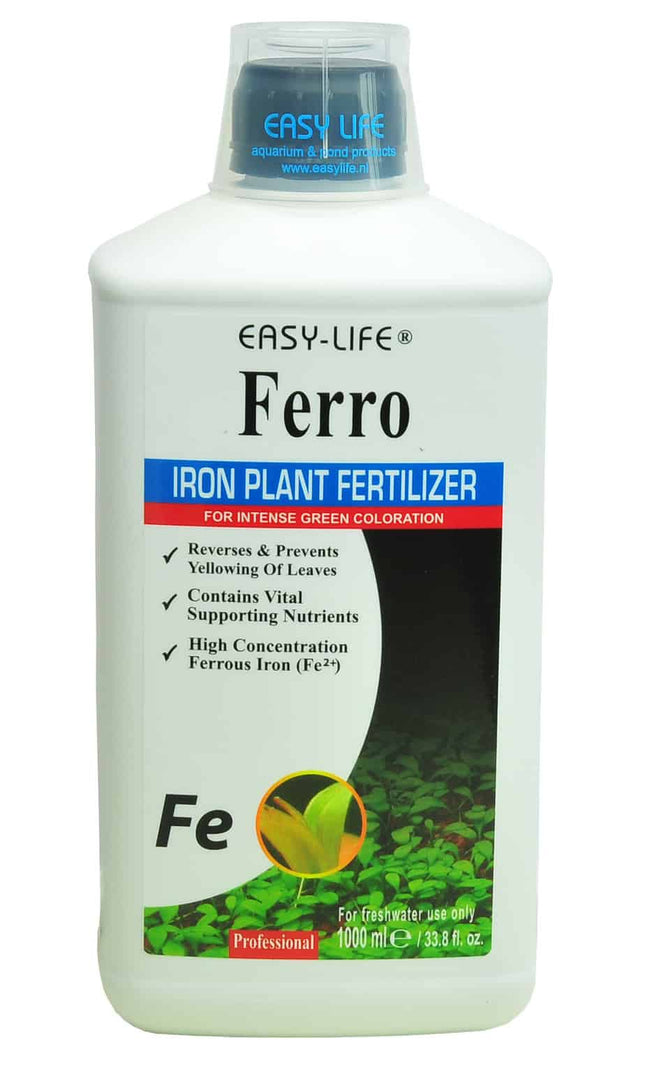
Easy-Life Ferro Iron Plant Fertilizer is a specially formulated liquid iron supplement for use in indoor and outdoor gardens. It is designed to provide essential iron nutrition for plants, and can be used in both soil and hydroponic systems. This iron fertilizer is easy to apply, and can be added directly to water or to a soil drench. It is composed of chelated iron and other micronutrients, and helps to prevent iron deficiencies and other nutrient deficiencies in plants. It is made with a special formula that ensures that it is highly bioavailable, and it can be used on a wide range of plants, including vegetables, flowers, and ornamental trees. With just 1 liter of this fertilizer, you can nourish your plants and keep them healthy and thriving.
$55.00
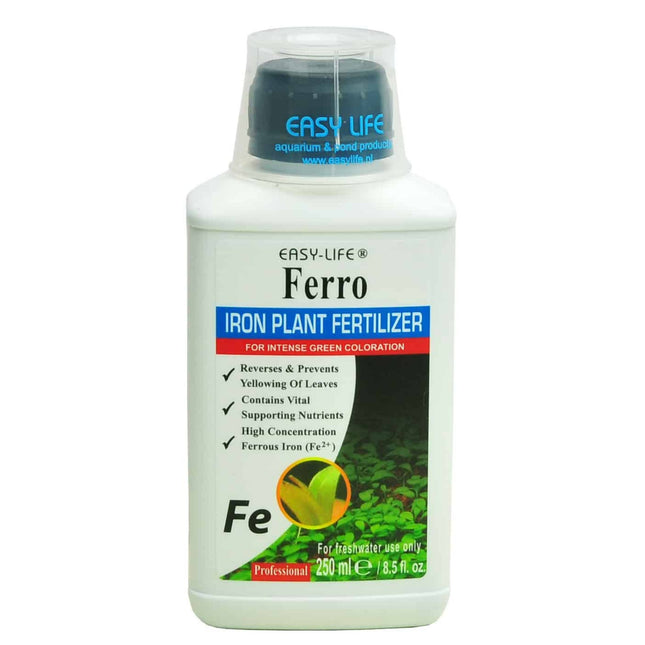
Easy-Life Ferro Iron Plant Fertilizer 250ml is an easy-to-use fertilizer formulated to provide essential nutrients to your plants. The fertilizer is packed with macro and micro elements to feed your plants for long-term growth. Its balanced NPK value ensures a healthy, lush and vibrant garden. The high-quality chelated iron content helps to strengthen plant's chlorophyll production for strong and dark green leaves. This liquid fertilizer is suitable for all types of plants and can be used in all growing seasons. It is easy to apply and ensures a better absorption rate for optimal plant growth.
$22.00
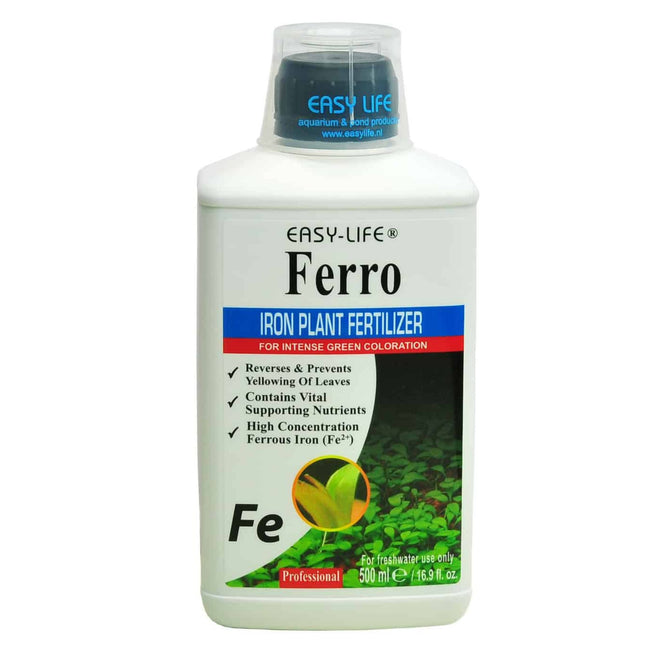
Easy-Life Ferro Iron Plant Fertilizer 500ml is a nutrient-rich liquid fertilizer that is specially formulated to provide essential iron and other essential trace elements to promote healthy and strong plant growth. This fertilizer is easy to use, and its 500ml size makes it convenient for larger gardens or multiple plants. It contains chelated iron to help plants take up nutrients more efficiently and also contains magnesium, zinc, manganese, and boron to improve overall plant health. With its balanced formula, this fertilizer is ideal for all types of plants, including vegetables, flowers, trees, and shrubs.
$35.00
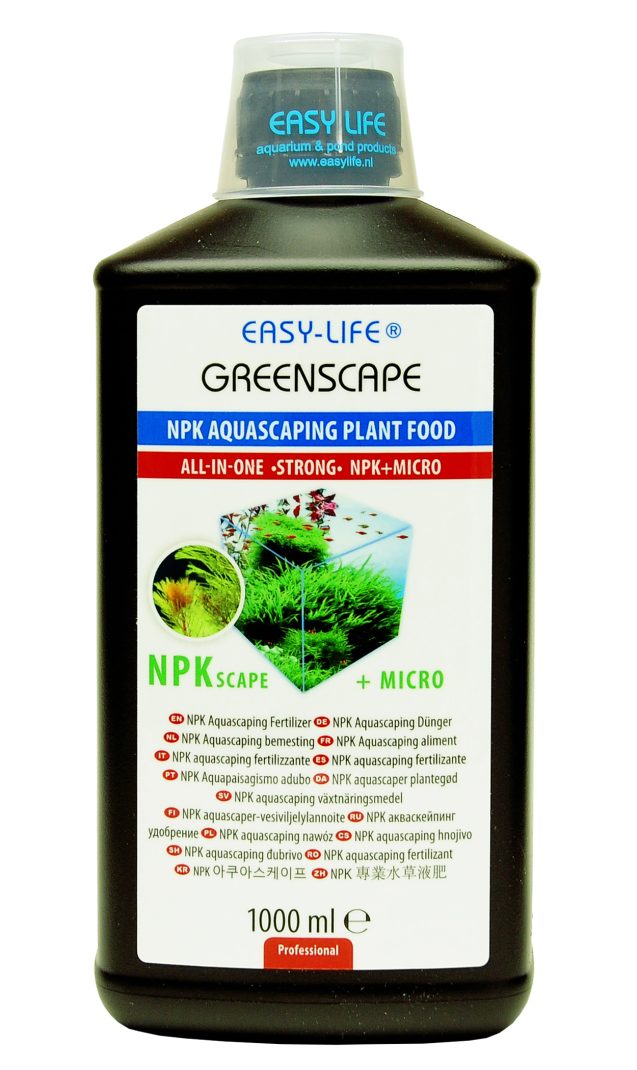
\nGreenScape is a comprehensive NPK fertilizer designed for heavily planted, fish-sparse aquariums, providing essential macro and micronutrients. For aquariums aiming to enhance red plant coloration, RedScape offers a lower nitrate option. While GreenScape is recommended for general use, RedScape can be incorporated periodically to intensify red hues in plants.\n\n
$80.00
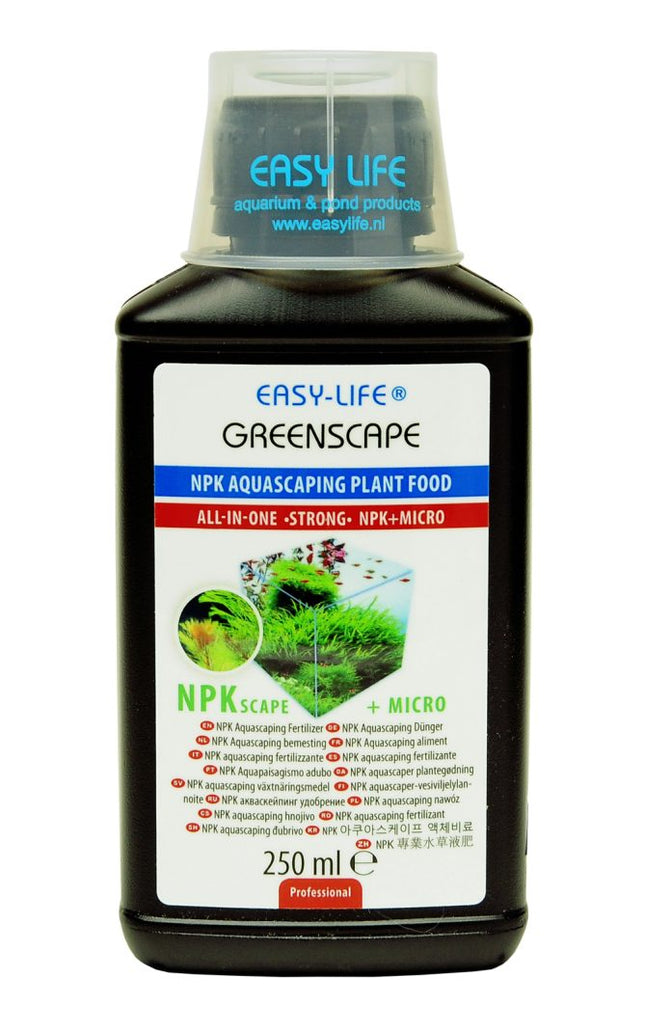
\nGreenScape is a comprehensive NPK fertilizer designed for heavily planted, fish-sparse aquariums, providing essential macro and micronutrients. For aquariums aiming to enhance red plant coloration, RedScape offers a lower nitrate option. While GreenScape is recommended for general use, RedScape can be incorporated periodically to intensify red hues in plants.\n\n
$27.00
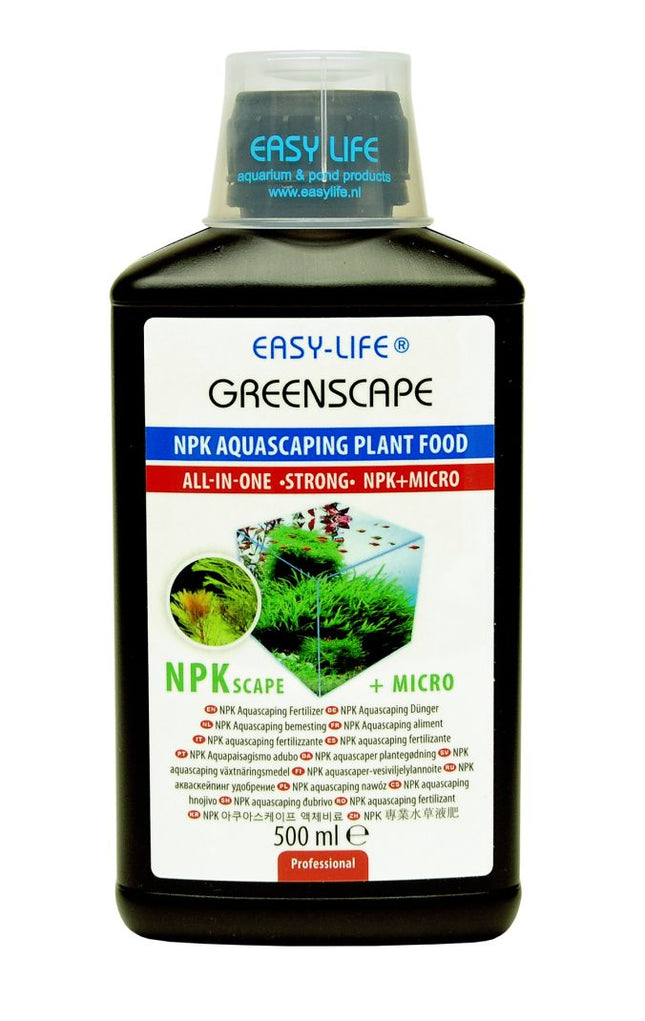
\nGreenScape is a comprehensive NPK fertilizer designed for heavily planted, fish-sparse aquariums, providing essential macro and micronutrients. For aquariums aiming to enhance red plant coloration, RedScape offers a lower nitrate option. While GreenScape is recommended for general use, RedScape can be incorporated periodically to intensify red hues in plants.\n\n
$46.00
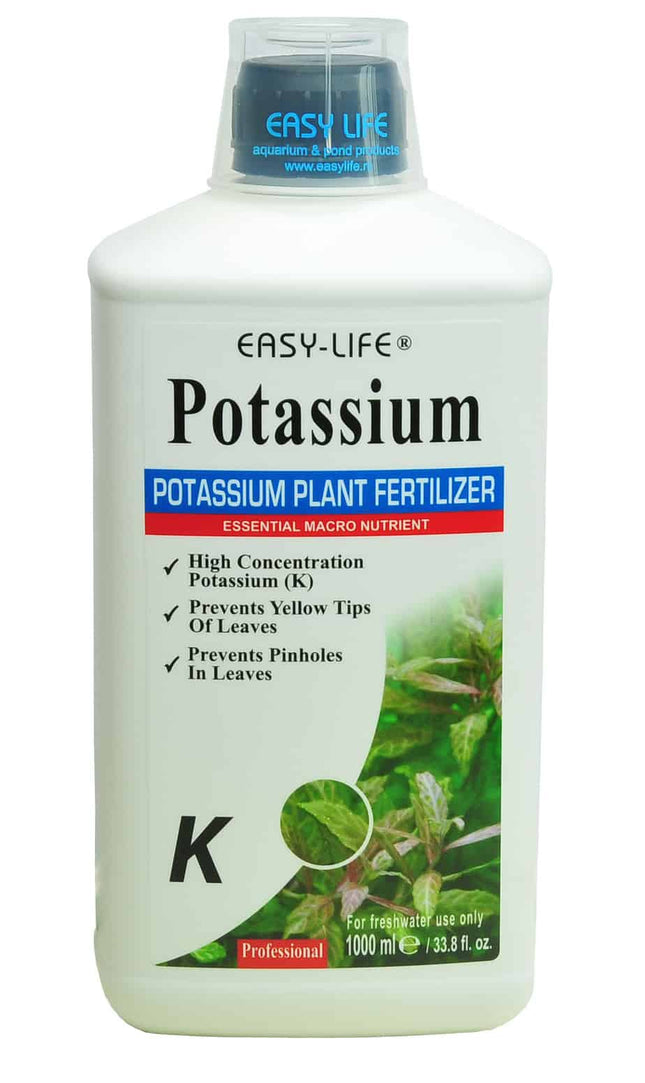
Easy-Life Potassium Plant Fertilizer is a balanced fertilizer specifically designed to provide your plants with all the necessary nutrients for optimal growth. It is enriched with potassium, an essential macro-nutrient that helps plants to produce more flowers, fruits and vegetables. This fertilizer also contains trace elements and organic matter to help improve soil structure, aeration and water retention. It is easy to use and can be applied directly to the root area or simply mixed with the soil. With 1L of this fertilizer you can cover up to 10m2 of soil.
$60.00

Easy Life Potassium Plant Fertilizer is a nutrient-rich liquid fertilizer specifically designed to provide optimal plant nutrition for healthy growth and flowering. This product contains a high concentration of potassium, which helps promote strong flower formation and increases tolerance to cold and drought. With its balanced blend of macro and micronutrients, this fertilizer is suitable for all types of flowering plants and is easy to use as it can be applied directly to the soil or mixed with water for foliar application. With 250ml of fertilizer per bottle, you’ll be able to feed your plants for months.
$25.00
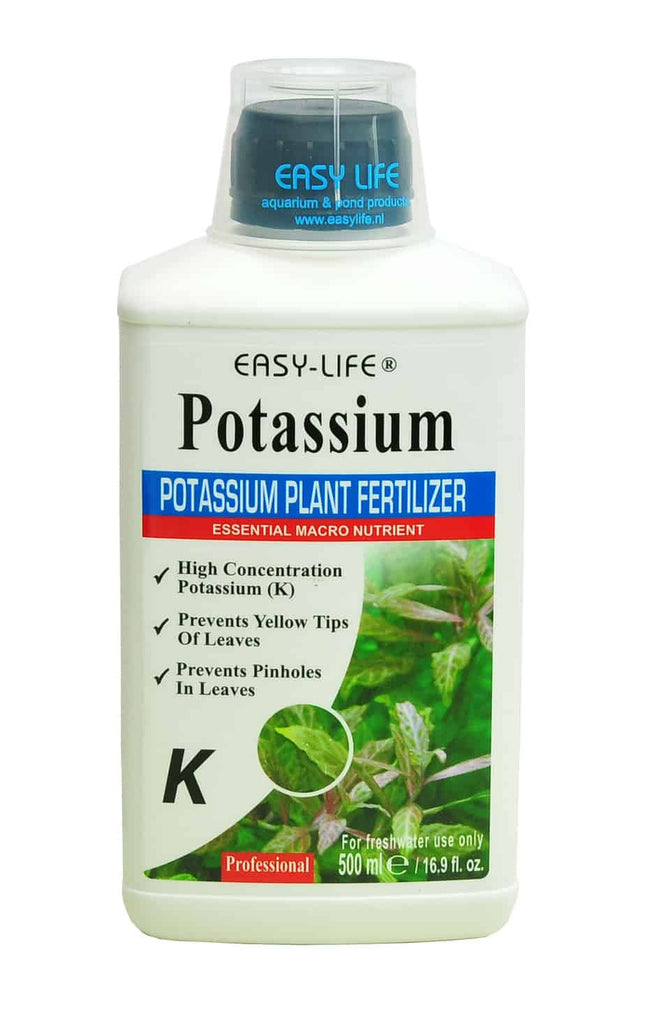
Easy Life Potassium Plant Fertilizer is a liquid formula that provides potassium to your plants. The professional grade fertilizer is easy to apply and can be used for both indoor and outdoor plants. It helps to promote healthy growth and vibrant colors in your plants, and can be used in combination with other Easy Life plantcare products. Each 500ml bottle contains enough fertilizer for up to 1000 liters of water. It is an excellent choice for gardeners looking to give their plants a boost of essential nutrients.
$35.00

Easy-Life Profito Universal Plant Fertilizer is a highly concentrated liquid fertilizer that provides a complete nutrient solution for plants of all types. This universal fertilizer is simple to use and contains a balanced blend of macro and micronutrients that are essential for optimal plant growth. The formula is also enriched with trace elements to promote healthy and vigorous development of plants. It is suitable for use on both indoor and outdoor plants and can be used on soil, hydroponic, and coco substrates. With just one liter of this fertilizer, you can easily provide your plants with all the nutrition they need.
$69.00
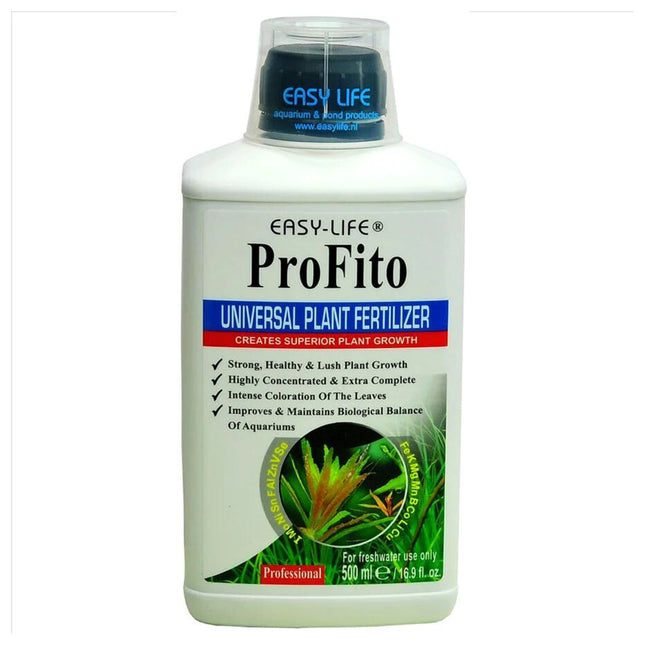
Easy-Life Profito Universal Plant Fertilizer is an all-in-one solution for the health and vitality of your plants. This unique formula is designed for use on all types of plants, from vegetables to flowers and indoor and outdoor plants. It contains essential macronutrients and trace elements, as well as beneficial microorganisms and humic and fulvic acids, which help to improve soil fertility and plant growth. With just a few applications, this fertilizer will give your plants the boost they need to thrive. It is easy to use, simply mix the fertilizer with water and apply it directly to the soil. With a 250ml package, you can ensure your plants stay healthy and happy for a long time.
$28.00

Easy Life ProFito Plant Fertilizer is a complete and balanced fertilizer specifically designed to meet the needs of all types of plants, both indoor and outdoor. It is formulated with nitrogen, phosphorus, and potassium, as well as trace elements, to ensure optimal growth and development. This fertilizer is easy to mix and use, and it can be applied to soil or directly to the plant foliage. It is also suitable for use with a variety of growing media, such as coco coir, soil, and hydroponic systems. With this fertilizer, your plants are sure to be healthy and flourishing.
$229.95 $210.00
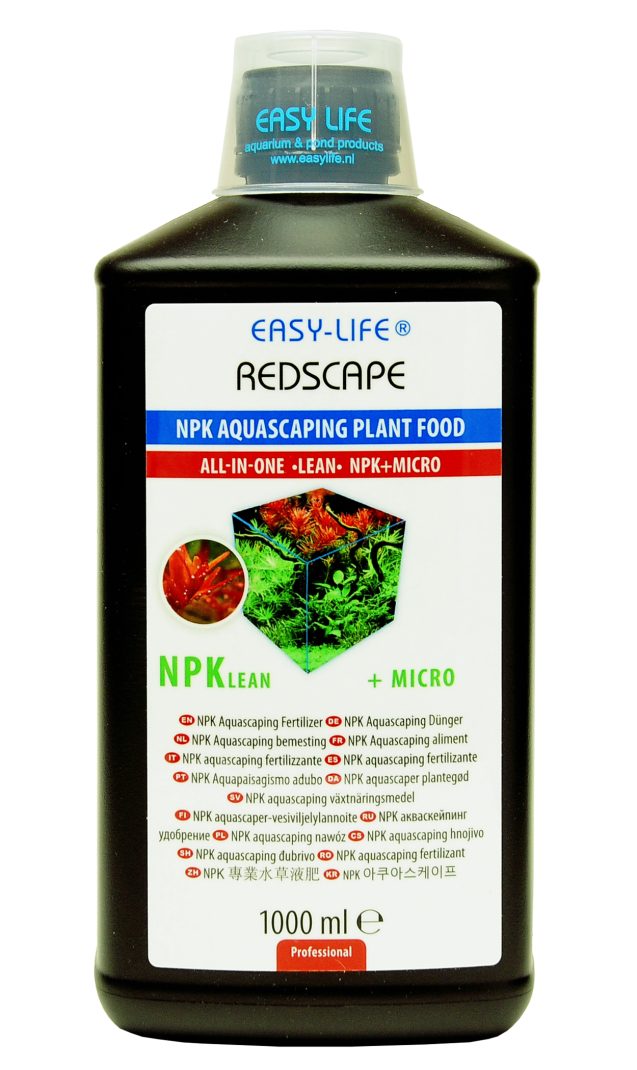
\nRedScape is a specialized, low-nitrate NPK fertilizer formulated to enhance the red coloration of aquatic plants in heavily planted aquariums. It provides a complete range of macro and micronutrients, including trace elements, to support plant growth. While GreenScape is suitable for general use, RedScape is recommended for aquarists aiming to intensify the red hues of their plants by limiting nitrate levels.\n\n
$80.00
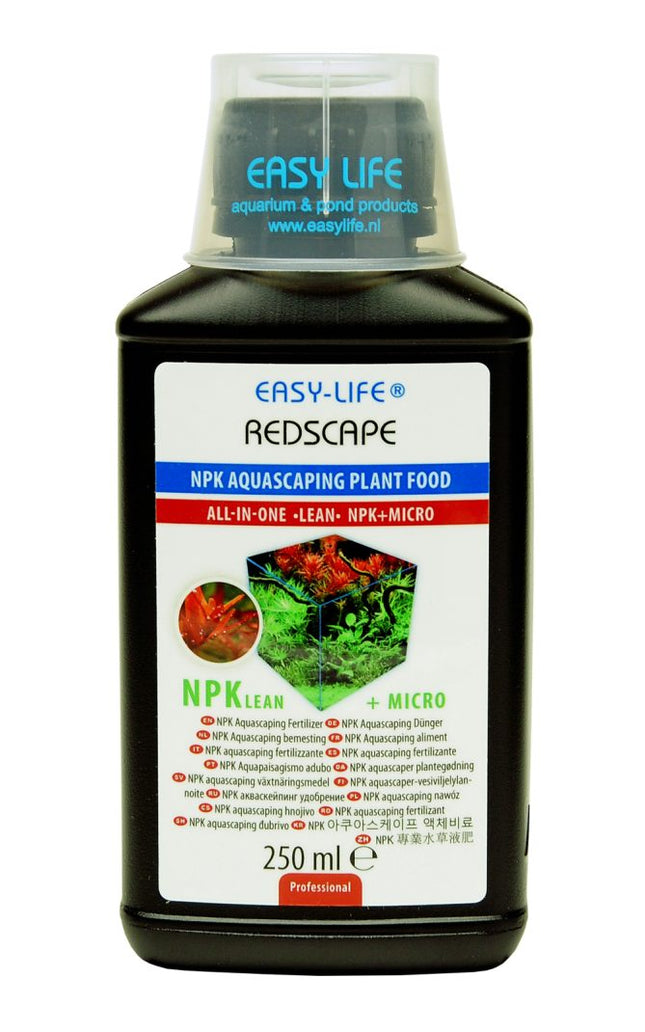
\nRedScape is a specialized, low-nitrate NPK fertilizer formulated to enhance the red coloration of aquatic plants in heavily planted aquariums. It provides a complete range of macro and micronutrients, including trace elements, to support plant growth. While GreenScape is suitable for general use, RedScape is recommended for aquarists aiming to intensify the red hues of their plants by limiting nitrate levels.\n\n
$27.00
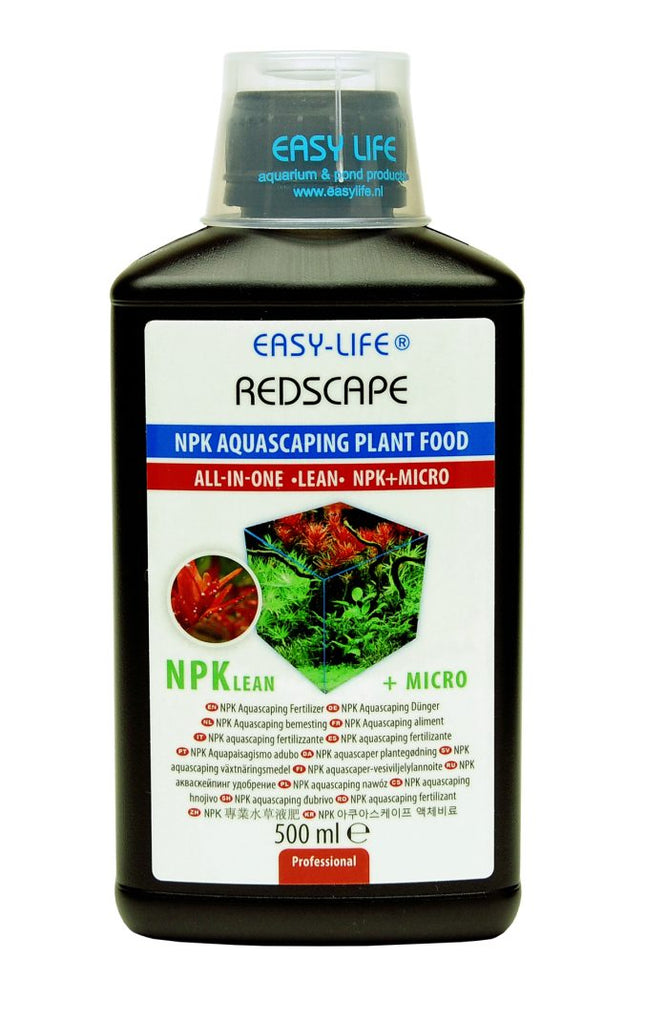
\nRedScape is a specialized, low-nitrate NPK fertilizer formulated to enhance the red coloration of aquatic plants in heavily planted aquariums. It provides a complete range of macro and micronutrients, including trace elements, to support plant growth. While GreenScape is suitable for general use, RedScape is recommended for aquarists aiming to intensify the red hues of their plants by limiting nitrate levels.\n\n
$46.00
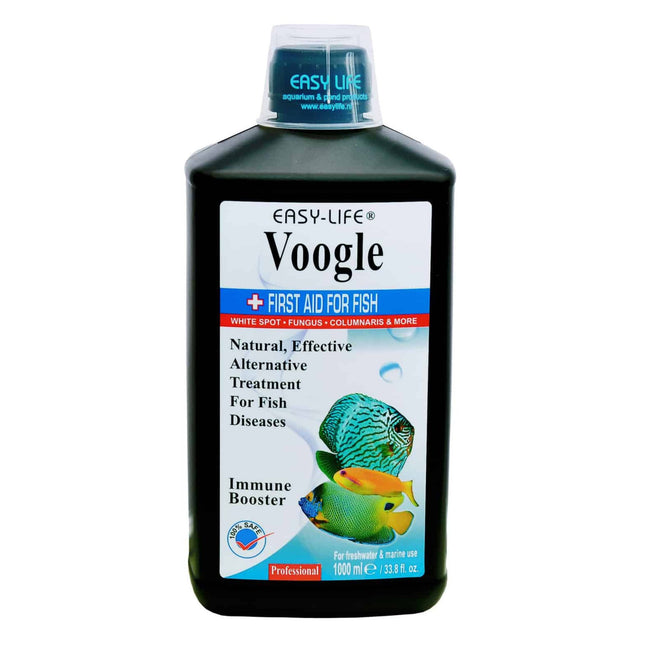
Easy-Life-Voogle Ultimate Immune Booster is a 1 liter bottle of all-natural, plant-based liquid supplement designed to improve your overall health and boost your immune system. It contains a blend of vitamins, minerals, antioxidants, and herbs that have been scientifically proven to promote immune health. The formula is designed to help protect against colds, flu, and other illnesses. It also helps to reduce inflammation and fatigue, increase energy levels, and improve digestion. With its easy-to-take liquid form, it is quick and easy to take and is suitable for adults and children alike.
$75.00
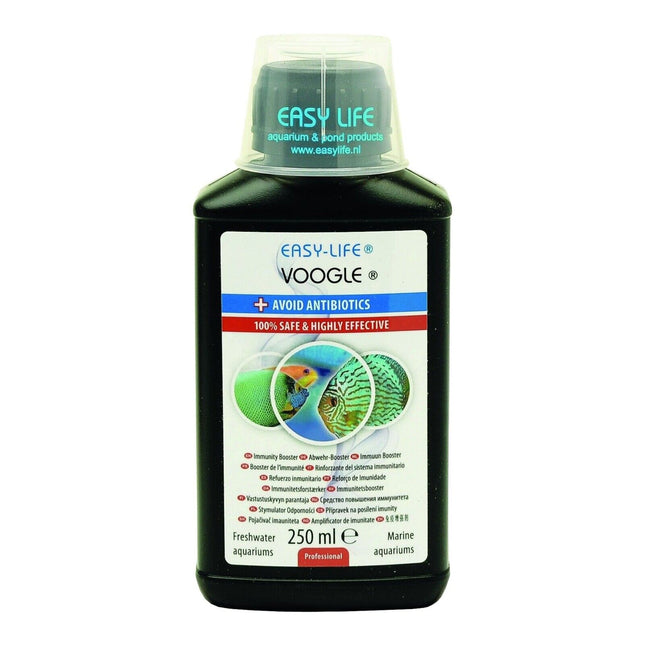
Easy Life Voogle Ultimate Immune Booster is a delicious and nutritious blend of natural superfoods that help support your immune system. This 250ml bottle contains a powerful blend of natural ingredients like acai, goji, and camu camu berries, spirulina, chlorella, wheatgrass, barley grass, and more. The unique combination of vitamins, minerals, and antioxidants helps to strengthen your body's natural immunity, so you can stay healthy and energized. Plus, the delicious berry flavor makes it easy to drink on its own or add to your favorite smoothie or juice.
$28.00
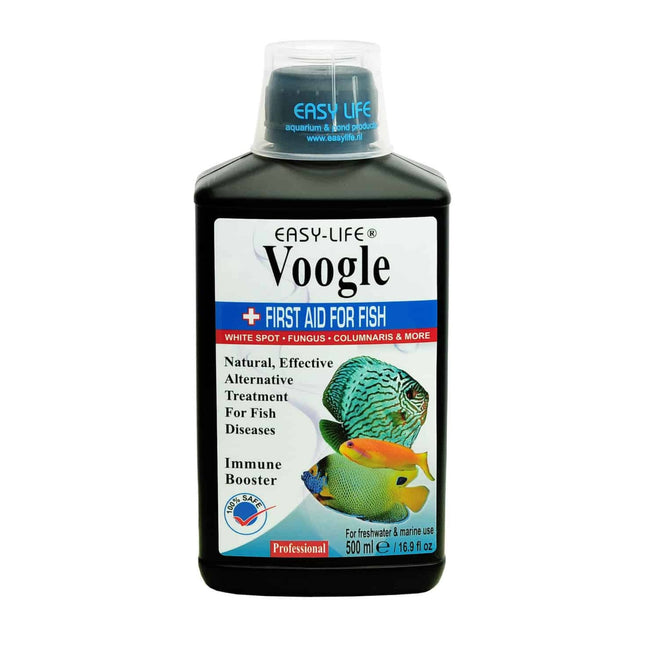
Easy Life Voogle Ultimate Immune Booster 500ml is a powerful blend of natural ingredients designed to support and strengthen your immune system. This unique formula combines herbal extracts, essential vitamins and minerals, probiotics and other nutrients to help you stay healthy and fight off illnesses. With 500ml of this blend, you can enjoy the benefits of this supplement for up to two months. It is an easy way to boost your immune system, helping you to stay healthy and to fight off colds and other illnesses. This supplement is non-GMO, allergen-free, and suitable for vegetarians and vegans. It is also free from sugar and artificial colors and flavors. Enjoy the benefits of Easy Life Voogle Ultimate Immune Booster 500ml today!
$49.00
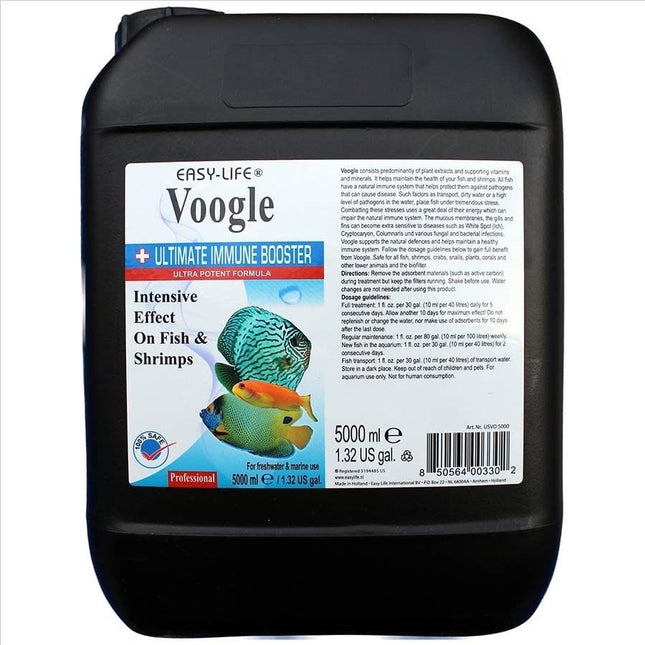
Easy-Life-Voogle Ultimate Immune Booster is a 1 liter bottle of all-natural, plant-based liquid supplement designed to improve your overall health and boost your immune system. It contains a blend of vitamins, minerals, antioxidants, and herbs that have been scientifically proven to promote immune health. The formula is designed to help protect against colds, flu, and other illnesses. It also helps to reduce inflammation and fatigue, increase energy levels, and improve digestion. With its easy-to-take liquid form, it is quick and easy to take and is suitable for adults and children alike.
$296.00

$15.00

Echinodorus reni, commonly known as the marble queen sword, is a beautiful aquatic plant that adds a touch of elegance to any aquarium. With its striking variegated leaves and low maintenance needs, it's perfect for beginners and experts alike. This potted version makes it easy to add to any tank.
$19.00
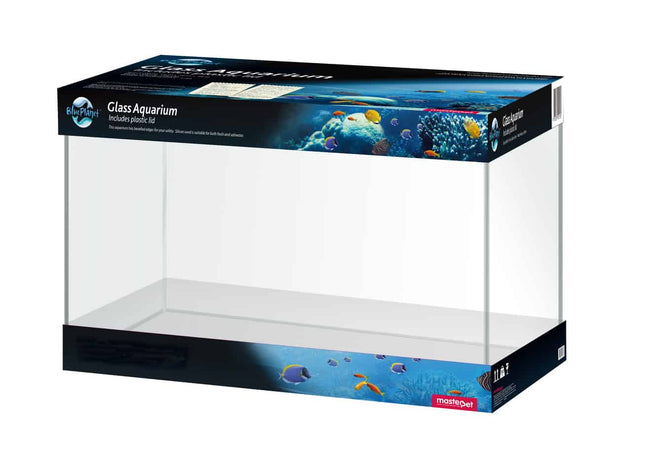
THIS IS A PICKUP ONLY ITEM - CAN BE DELIVERED. PLEASE CHOOSE THE CORRECT OPTION A basic Aquarium without the frills so you can add your own lighting and special touches! Features: Glass aquarium you can customise to your own. Has bevelled edges for your safety. Includes a plastic lid. Suitable for freshwater or marine setups. Dimensions: 61x30x38cm Capacity: 65L About Blue Planet Blue Planet products are designed to give your finned friends a fabulous, freshwater life – everything from castles to fish food to filters. Blue Planet is distributed by Masterpet, a company with over 50 years experience. Masterpet wants to be best in show when it comes to having everything our pet needs and will continue to make feel-good products for our pets in the future.
$129.00 - $219.00

Material Membrane Brand Dream Outside Item dimensions L x W x H10 x 5 x 3.5 centimetres Exterior finish painted Inlet connection type Barb Outlet connection type Barb Voltage: 12 V DC Current: 250 mA Pressure: 0 - 0.5 MPa Valve type: diaphragm Operating mode: closed without current
$25.00
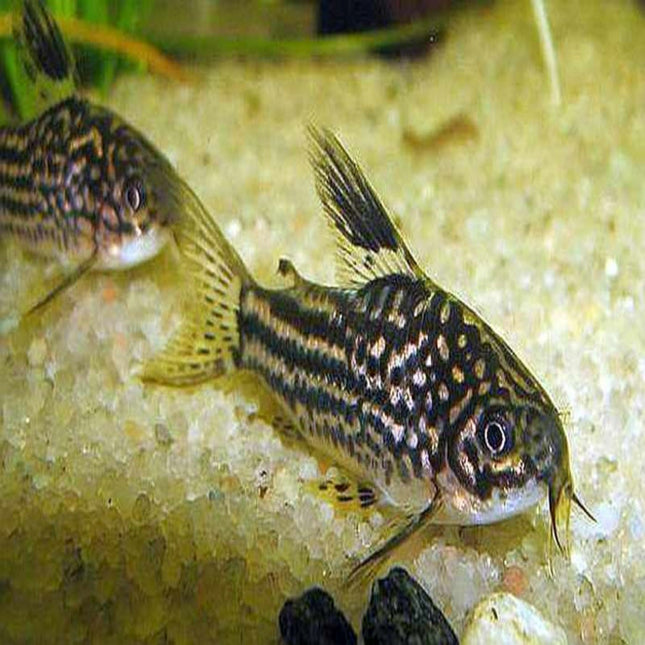
Elegant Corydoras, also known by its scientific name Corydoras elegans, is a small freshwater fish that is popular among aquarists. The Elegant Corydoras is a peaceful and social fish that is known for its distinctive and beautiful appearance. It has a silvery-white body with a black spot at the base of the tail and a vibrant orange stripe running along its back. The Elegant Corydoras is a schooling fish and should be kept in groups of at least six individuals to ensure their social needs are met. In terms of care, the Elegant Corydoras is a hardy fish that is relatively easy to care for. They are a great choice for beginner aquarists, as they are not overly sensitive to changes in water conditions. These fish prefer a well-planted aquarium with plenty of hiding places, as they are known to be shy and can be easily stressed if they do not feel secure. The Elegant Corydoras is a bottom-dwelling fish that is known for its love of scavenging, and they will happily eat any food that falls to the bottom of the aquarium. They should be fed a balanced diet that includes high-quality pellets, flakes, and frozen foods. Overall, the Elegant Corydoras is a great addition to any community aquarium, adding both beauty and personality to the tank. With their ease of care and peaceful nature, they are a popular choice for aquarists of all skill levels.
$39.00

The Emerald Dwarf Rasbora (Danio erythromicron) is a small freshwater fish that is native to Myanmar (formerly Burma). It is a peaceful and active fish that is ideal for planted aquariums and nano tanks. The Emerald Dwarf Rasbora has a slender body with a bright green iridescent coloration that gives it a stunning and eye-catching appearance. It has a black stripe that runs along its body, which is more prominent in males. This fish is relatively hardy and can adapt to a wide range of water conditions, making it a great choice for beginner aquarists. They thrive in planted aquariums with plenty of hiding places, such as rocks and driftwood. They are also compatible with other peaceful species, including small shrimp and snails. In terms of feeding, the Emerald Dwarf Rasbora is an omnivore and will readily accept a variety of foods, including flake and pellet foods, as well as live and frozen foods. A well-balanced diet is essential for their health and well-being. Overall, the Emerald Dwarf Rasbora is a beautiful and hardy fish that is perfect for aquarists of all skill levels. Its stunning green coloration, peaceful nature, and small size make it an excellent choice for planted aquariums and nano tanks.
$25.00
You have seen 252 out of 936 products